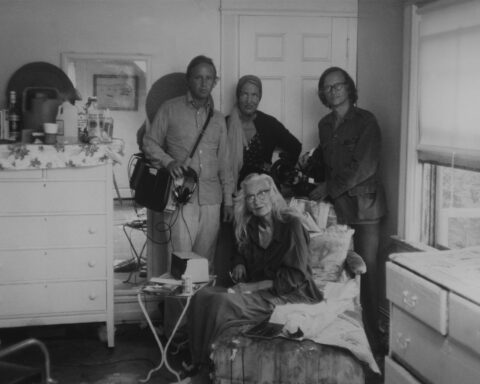Letter from Masanjia
(Canada, 76 min.)
Dir. Leon Lee
Programme: Canadian Spectrum (World Premiere)
The Hot Docs programme notes for Letter from Masanjia offer one of the best hooks of the festival. They tease, “When a desperate SOS letter penned by a political prisoner turns up in Halloween decorations sold in Oregon, it sparks a nail-biting chain of events that exposes appalling human rights violations and leads to sweeping labour reform in China.” You have to see this amazing story to believe it.
Letter from Masanjia starts with the American woman, Julie Keith, who discovered the letter in a fateful box of cheap Styrofoam Halloween decorations. Keith explains her surprise over finding two letters—one in English and one in Mandarin—that offered a cry for help to whomever purchased the item to draw attention to the inhumane conditions of the labour camp housing “thousands” of prisoners. Keith says her effort to connect with human rights groups proved futile, but the media knew a good story when it saw one and the case became an international headline.
Director Leon Lee follows the clues and finds the writer of the letter, Sun Yi, who reveals that, thankfully, he was released from the prison. Sun Yi wants to keep the story going, though, so Lee directs him from afar as the former political prisoner uses hidden cameras and covert ops to document the Chinese government’s war on human rights. His camera focuses primarily on the story behind his incarceration, the vilification of Falun Gong practitioners as dissidents and enemies to the Communist government.
Yi recounts his experience in drably shot interviews, which contain urgent subject matter but aren’t visually compelling enough to carry a theatrical feature. The tension looks to be fizzling once he starts to explain the backstory of the letter from the Masanjia jail. However, Yi also happens to be an architect, cartoon enthusiast, and terrific artist.
Lee invites the former prisoner to transport audiences to the hell of the Chinese labour prison through animated impressions. These greyscale graphic novel-style nightmares compensate for the inevitable (and understandable) lack of footage from within the prison. The subjective approach conveys the horror of the experience and Yi’s strength in enduring the torture used to coerce dissidents to renounce Falun Gong. Crafty sound effects conjure every crack of the guard’s blows and every bead of sweat that drops from Yi’s brow as he withstands torture. The director also scores some impressive interviews with former prison guards who speak openly about the inhumane treatment of prisoners and seem shaken by their experiences.
Lee finds that Yi’s story is still one of paranoia and peril long after Keith received his letter. He tells of living in constant fear over persecution for his beliefs, and the tension strains his marriage. Yi’s effort to use the documentary to expose the everyday reality of the China’s oppressive regime is courageous.
Letter from Masanjia straddles the modes of docu-thriller and human rights film as Lee contrasts Yi’s experience in the prison with the post-release hell he endures. Surprisingly, the elements in the labour jail, despite Yi’s visceral recollections, are less thrilling than the stories of his encounters and paranoia following his release. (The ominous musical score proves a bit too heavy-handed with its super-serious bravado during the prison sequences as well.) As a portrait of human rights, it’s very compelling as it connects two individuals thousands of miles apart. Keith’s story tells Canadian audiences to be conscious of their consuming habits and to consider that the hidden costs of cheaply made goods. The price of a cheap Halloween decoration is extraordinarily high as Letter from Masanjia reveals in its tragic finale.
Letter from Masanjia screens:
-Fri, May 4 at 4:00 PM at Scotiabank
Hot Docs runs April 26 to May 6. Please visit hotdocs.ca for more info.









